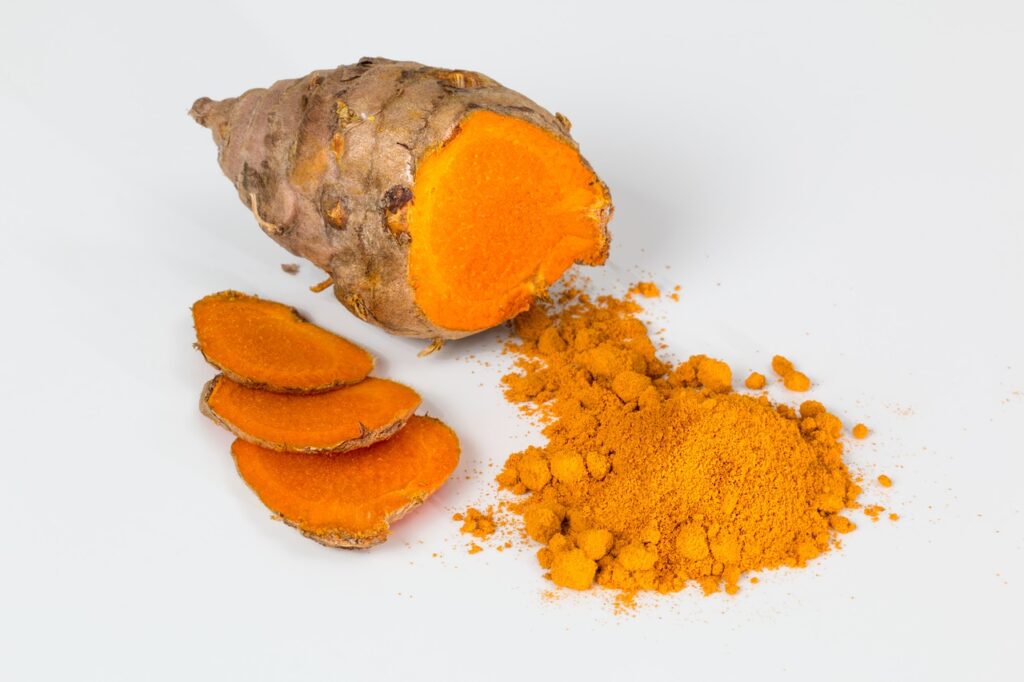Turmeric (Curcuma longa), known for its vibrant orange-yellow rhizomes and medicinal properties, is a valuable addition to any herb garden. Here’s a detailed guide on how to grow and care for turmeric to enhance your garden’s health and productivity.

Types of Turmeric
Turmeric plants come in various varieties, each offering unique characteristics and benefits. Here are some popular types:
| Type of Turmeric | Characteristics |
|---|---|
| Curcuma longa | Traditional variety known for its medicinal uses and culinary applications, with vibrant orange rhizomes. |
| Curcuma aromatica | Also known as wild turmeric, known for its stronger aroma and used in traditional medicine. |
| Curcuma zedoaria | Known as white turmeric, with white flesh and a slightly different flavor profile. |
Growing Season
Turmeric has a specific growing season that ensures it thrives and develops healthy rhizomes. Here’s a seasonal guide:
| Season | Activity |
|---|---|
| Spring | Plant turmeric rhizomes, fertilize, start regular watering. |
| Summer | Continue watering, provide partial to full shade, monitor for pests. |
| Fall | Reduce watering, prepare for harvest as foliage begins to yellow. |
| Winter | Harvest rhizomes, minimal maintenance, store rhizomes for next planting season. |
Sunlight and Water Needs
Turmeric thrives in partial to full shade and needs consistent moisture to grow healthily.
- Sunlight: Partial to full shade.
- Watering: Keep soil consistently moist but well-drained. Water when the top inch of soil feels dry.
Soil Preferences
Turmeric prefers well-drained, fertile soil rich in organic matter to promote healthy growth.
| Soil Type | pH Level | Characteristics |
|---|---|---|
| Loamy soil | 5.5-6.5 | Well-draining, rich in organic matter. |
| Sandy loam | 5.5-6.5 | Balanced drainage and moisture retention. |
Fertilization and Nutrients
Turmeric benefits from regular feeding during the growing season to encourage vibrant growth and healthy rhizomes.
| Season | Fertilization Type |
|---|---|
| Spring | Balanced slow-release fertilizer when planting rhizomes. |
| Summer | Fertilize every 4-6 weeks with a balanced liquid fertilizer. |
| Fall | Stop fertilizing to prepare for harvest. |
| Winter | No fertilization needed. |
Pruning and Maintenance
Regular maintenance helps keep turmeric plants healthy and productive. Remove any yellowing or dead leaves as needed.
Additional Tips for Growing Turmeric
- Container Choice: Use large pots with drainage holes for container-grown turmeric.
- Humidity: Maintain high humidity; mist the plants regularly or use a humidity tray.
- Pest Control: Watch out for pests like aphids and spider mites. Use appropriate insecticidal soap if necessary.
- Support: Generally does not need staking, but ensure the plant has enough space to spread.
Conclusion
Turmeric is a versatile and rewarding addition to any garden, offering medicinal benefits and vibrant foliage with minimal care. By choosing the right type of turmeric and providing proper sunlight, water, and soil conditions, you can enjoy a bountiful harvest of this golden spice.